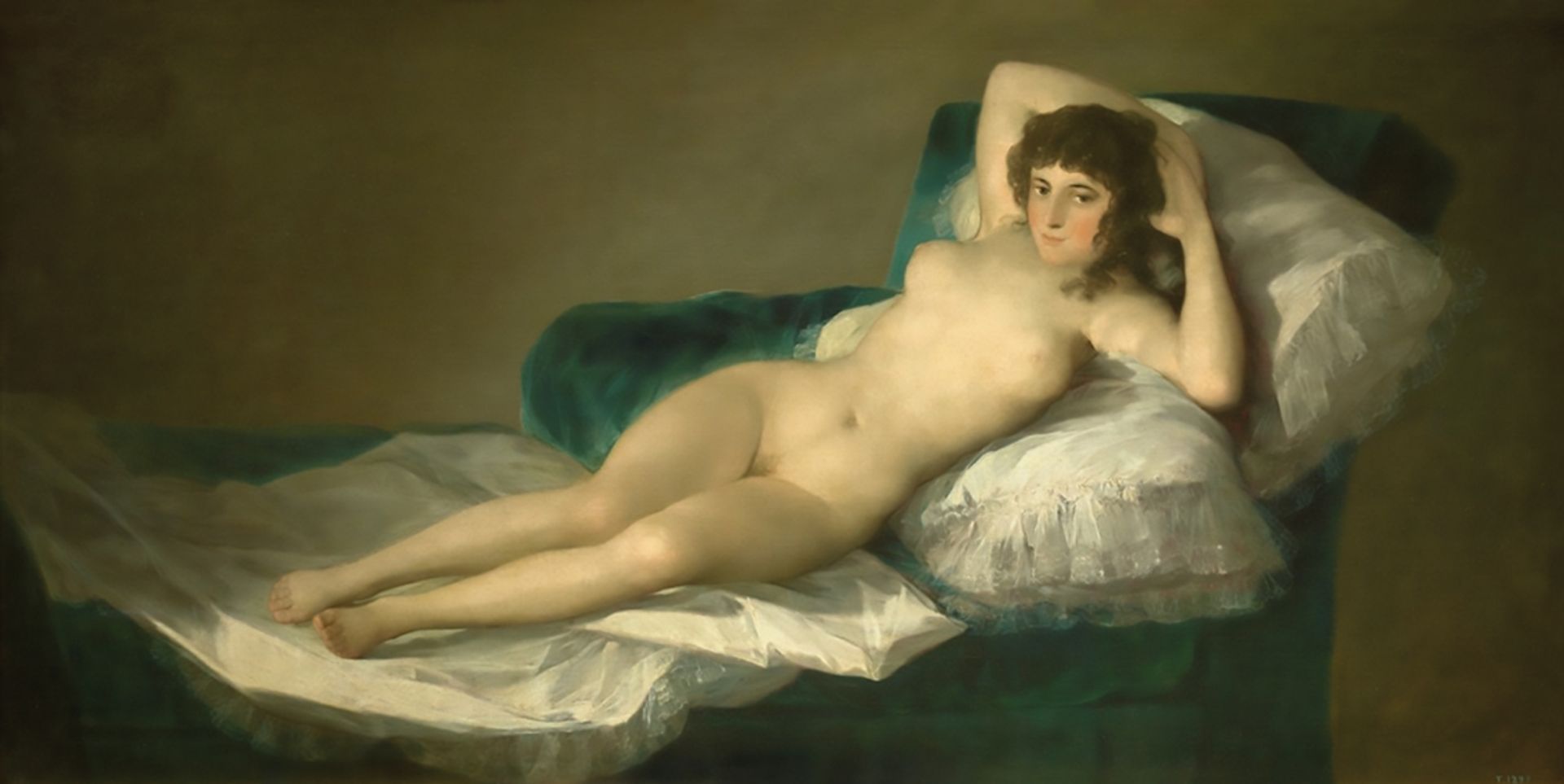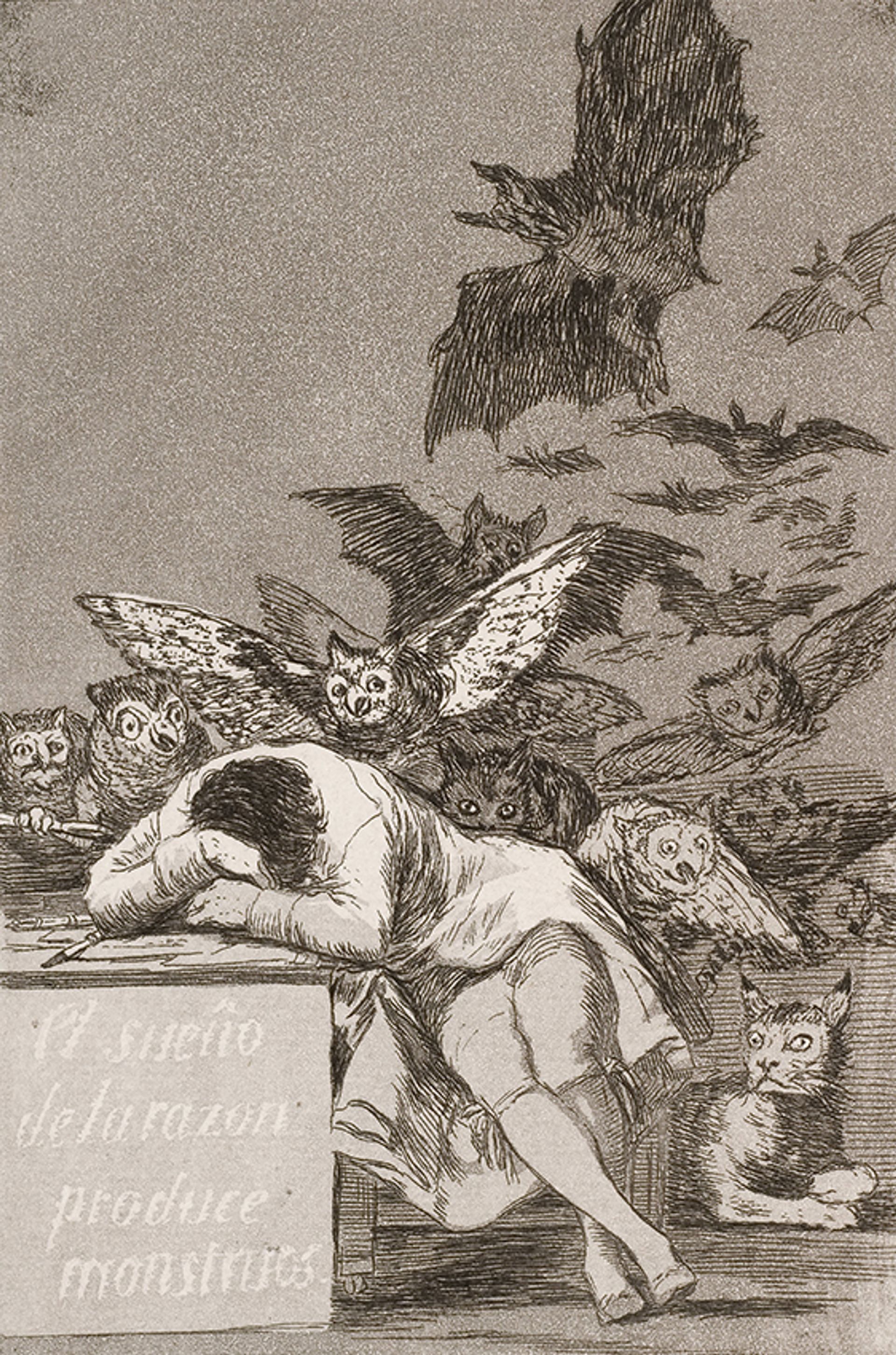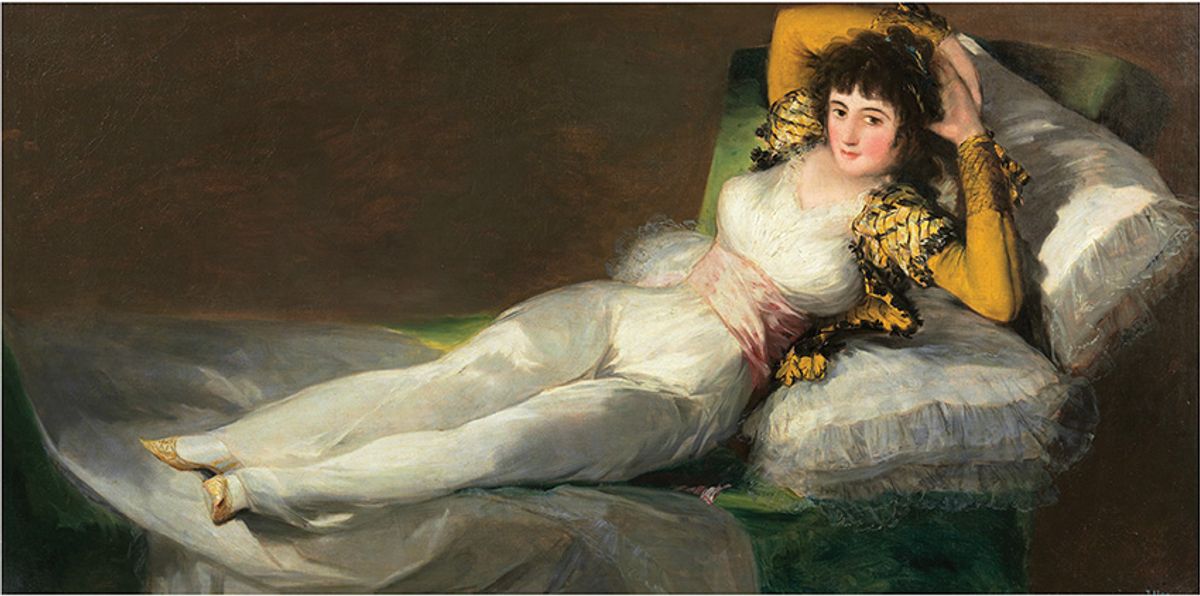Basel’s Beyeler Foundation has scored a coup in securing The Clothed Maja for next month’s Goya exhibition—although The Naked Maja will remain in her home, the Prado in Madrid. The naked pendant is simply too loved by visitors to allow her out on loan.
There has been much speculation about this pair of paintings, commissioned by Prince Manuel Godoy. The Clothed Maja (1800-07), completed a few years its counterpart, may have been placed in a frame in front of The Naked Maja (1795-1800) to conceal its nudity. But as the Prado’s former curator Manuela Mena Marqués admits, “the close-fitting, transparent gown of the clothed model does little to disguise her anatomy”. The identity of the woman still remains a mystery (radiography has rebutted the theory that it is the Duchess of Alba, Godoy’s mistress).
Altogether the Beyeler exhibition will present 75 paintings by Francisco de Goya (1746-1828), along with 50 drawings and 50 prints.

Francisco de Goya’s The Naked Maja (1795-1800) will remain at the Prado in Madrid as it is too popular with visitors to be loaned Image: courtesy of Museo Nacional del Prado
The Beyeler started discussions about the show 13 years ago with the Museo Nacional del Prado, which holds the greatest collection of Goyas. The Madrid museum is generously lending 12 paintings and 33 drawings. In the recent past the Beyeler has reciprocated with loans of works by Picasso, Giacometti and Bacon for exhibitions at the Prado.
Originally scheduled to run last year, from May to August, the Goya show had to be postponed because of Covid-19. Most of the lenders then agreed to the new dates for their loans. Fortuitously this now means the exhibition is opening 275 years after the artist’s birth.
Martin Schwander, the Beyeler’s curator, believes that it will be “one of the most significant exhibitions ever devoted to Francisco de Goya outside Spain”. Goya, opening on 10 October in the Beyeler’s magnificent galleries in Riehen, just north of the centre of Basel, will boast an astonishing array of loans.
These include two other paintings of Majas (young Spanish women in traditional costumes): Majas on a Balcony and Maja and the Matchmaker, both 1808-12. They come from private collectors; the first is anonymous and the second is Alicia Koplowitz of Madrid-based Omega Capital. These two pictures may well not have been brought together before.

Goya's The Sleep of Reason Produces Monsters from Los Caprichos (around 1799)
Eight genre paintings (1806-10) now owned by the Marqués de la Romana will be on show, the first time they have ever been seen outside Madrid. They will be joined by four rarely loaned panels (1810-16) from Madrid’s Real Academia de Bellas Artes de San Fernando. In these enigmatic works Goya gave free rein to his imagination.
Prints of the Caprichos series (1797-99) will also be displayed, including the famed work, The Sleep of Reason Produces Monsters. In this melancholic etching, irony and sarcasm cannot fight off irrationality. This set is being lent by the Bern collector Eberhard Kornfeld, the head of one of Switzerland’s leading auction houses.
It may come as a surprise that Switzerland, which came late to Goya, is mounting the retrospective. It was not until the 1920s that the Winterthur-based collector Oskar Reinhart bought his first Goya (his museum is lending Salmon Steaks, 1808-12, which has never gone out on loan). Even now the Reinhart museum and the Bührle collection, which will soon be housed in the Kunsthaus Zurich, are the only ones in Switzerland that own any Goya paintings.
The Beyeler, which holds a magnificent collection of Modern and contemporary art, is stressing the impact of Goya’s work on later painters. In the 1920s, the Surrealists saw in him a kindred spirit. His enigmatic pictorial world was greatly admired by 20th-century Spanish painters, including Picasso and Miró. Today Goya remains a model for many artists whose work opposes war, oppression, exploitation and ignorance.
• Goya, Beyeler Foundation, Riehen, Basel, 10 October-23 January 2022


